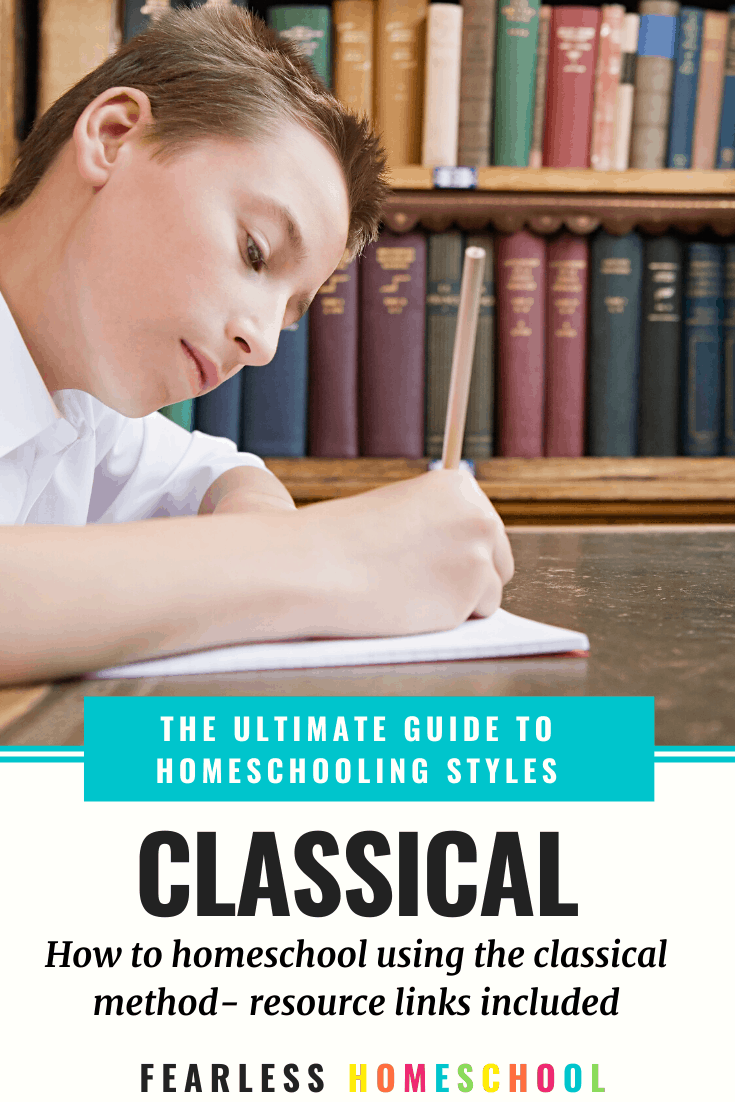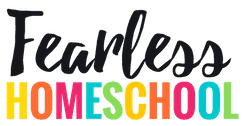Welcome to the third post in the Ultimate Guide to Homeschooling Styles series! Click here to view the rest of the series.

The classical education method aims to teach children how to think, rather than what to think. There is a strong focus on communication and logic skills and providing a broad and deep historical knowledge base to apply these skills to. Material is presented in a ‘parts to whole’ format – therefore, phonics are taught, grammar is important, and when languages are learned declension and conjugation is a focus. There is a strong focus on paper and pencil, with the use of technology kept to a minimum in young children, and used mindfully as they get older. The ‘Great Books’, from Plato to Dostoyevsky, are studied, and the interconnections between all knowledge emphasised.

History of the Classical Method
The ancient Greeks and Romans developed many of the ideas and methods of classical education, and in the Middle Ages these methods were refined, organised and applied much more systematically. This is when the term ‘trivium’ (three ways) originated. The revival of classical education in the modern era is largely attributed to an essay published in 1947, The Lost Tools of Learning by Dorothy Sayers, which laments the lack of focus on teaching students how to think in modern education, and the over-specialisation of topics, and calls for a return to the classical method of the Trivium.
The Trivium
The Trivium consists of grammar, logic and rhetoric. The most popular modern interpretation of classical education provides four years of education in each stage. These are not prescriptive; if a child is early or late to a stage the stages can be adapted. It can also be implemented with older students.
Grammar (aka language) generally covers grades 1-4. At this age children are usually fascinated by language and words, so the focus is on mastering the skills of reading, writing and basic maths, and getting an interesting introduction to history, science and the arts. This stage aims to equip a child with the basis of knowledge that will allow them to build on over their education. It includes rote memorisation of important base facts and rules.
Logic (aka thought) usually covers grades 5-8. This is the age when children start to challenge ideas instead of accepting them, therefore critical thinking and analysis is introduced. With the strong basis laid down in the grammar stage the child is now capable of applying and connecting that knowledge in a systematic way.
Rhetoric (aka speech) generally covers grades 9-12. Children are eager to express their ideas, and the rhetoric stage teaches them to do this logically, eloquently and persuasively.

The Good Points
- It provides a rigorous, comprehensive base of knowledge
- As it focuses on tools and foundations of learning, classical education equips a child very well for further independent and/or formal study
- Skills in reading, writing, logic and speaking are more important than ever with the advent of the internet and the information economy
- It encompasses virtue and morals based on historical study and appraisal
- Suits the stages of child development
The Not-So-Good Points
- It requires quite a lot of parental assistance, especially in the early stages. This is not a method for the free-flowing and easygoing types!
- Some find the emphasis on rote memorisation, narration and dictation onerous
- Children with different learning styles may find the focus on text-based materials does not suit them
More Resources
The Well-Trained Mind | A Guide to Classical Education at Home – Susan Wise Bauer and Jessie Wise
The Core | Teaching Your Child the Foundations of Classical Education – Leigh Bortins
Trivium Mastery | The Intersection of Three Roads: How to Give your Child an Authentic Classical Home Education – Diane Lockman
Designing your own Classical Curriculum | A Guide to Catholic Home Education – Laura Berquist
Also, take a look at my Classical Homeschooling board on Pinterest to discover fantastic resources that will help you set up your own Classical Homeschool.
Follow Kelly | Fearless Homeschool’s board Classical Homeschooling on Pinterest.

Trackbacks/Pingbacks